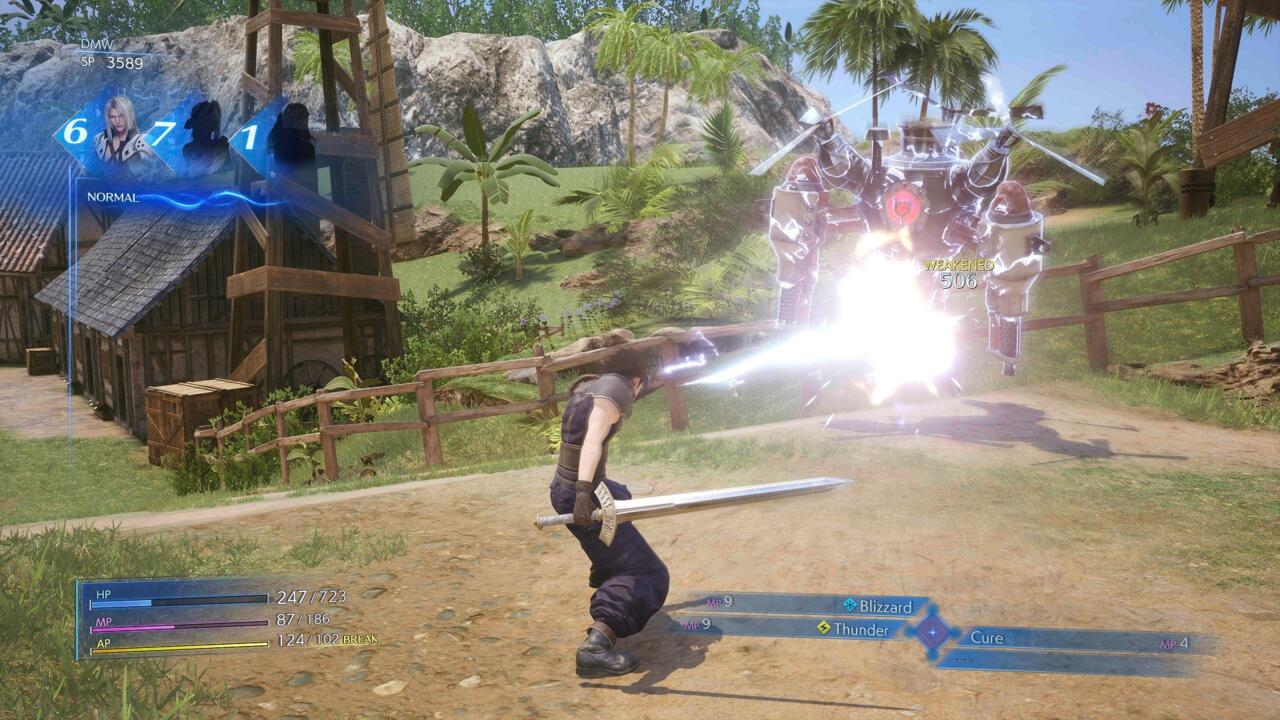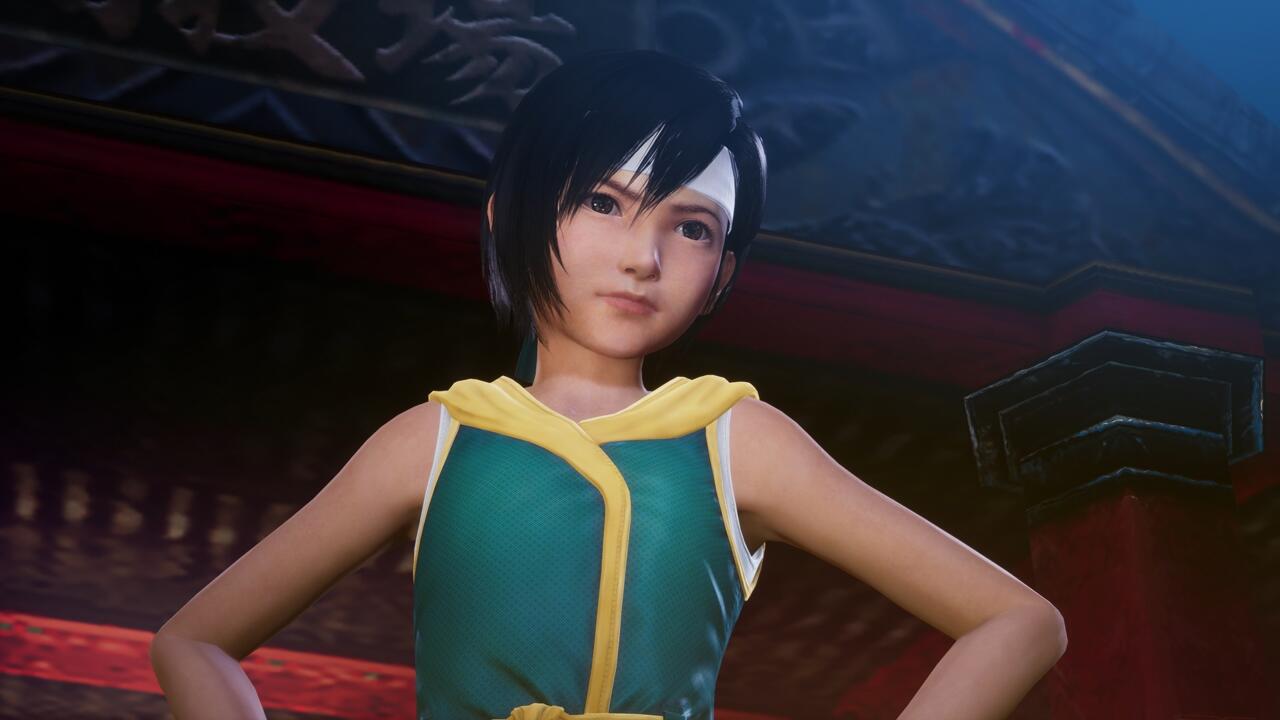Final Fantasy VII is an enduring classic, and the success of Square Enix's 1997 RPG also led to several spin-offs. Crisis Core: Final Fantasy VII was the best of them, but if you didn't buy Sony's first handheld gaming console, the PlayStation Portable, you missed it. Some 15 years after its release, you'll get another chance to experience Crisis Core with its remade version, Crisis Core: Final Fantasy VII Reunion, and it appears that it'll be very similar to the PSP original--only better.
GameSpot got a chance to play a short Crisis Core Reunion demo at a Square Enix preview event in Los Angeles. What was notable about the demo was just how similar it feels to the original Crisis Core, in its gameplay and presentation.
Final Fantasy VII Remake set a high bar for reviving a classic game, both retelling the original game's story and altering it in key ways to create something new. Crisis Core is a prequel to the original FFVII, but despite its links to FFVII Remake's revised story, producer Mariko Sato previously told GameSpot that Reunion is hewing closely to the original Crisis Core's story. That's what we saw in the demo as well--the story and cutscenes of Crisis Core Reunion seem extremely similar to what was in the original game. The primary changes and improvements are in Reunion's combat.
Though the original Crisis Core was released in 2008, it brought with it an action-centric focus on combat that feels similar to what Square Enix has done with more recent Final Fantasy games, FFVII Remake in particular. Your primary means of fighting enemies in Crisis Core comes down to melee strikes against foes, dodges to get you out of harm's way, and guarding to absorb incoming hits, although you only control one character rather than a party of three. You also can equip Materia--the crystals that allow people in the FFVII universe to use magic--that allow you to cast spells or activate special abilities during battle.
Crisis Core keeps all its fighting in real-time--using your special abilities, magic spells, or healing items is done with by pressing different combinations of buttons, and there's no break in the action like in FFVII Remake. With Crisis Core Reunion, however, it's clear that the movement, melee fighting, and camera systems have been tuned up, making the combat feel like a Crisis Core spin on FFVII Remake's foundation.
Crisis Core Reunion also retains the gameplay ideas that defined the PSP original. You play as protagonist Zack, a minor character from Final Fantasy VII, seven years before the events of that game. The main feature of fights is the DMW, or Digital Mind Wave, a slot machine-like device that sits in the corner of your screen. The DMW is almost always running, and when it lands on matching numbers or photos of characters Zack befriends throughout the game, it conveys bonuses that can have a major effect on your strategy. One bonus might make all your magic spells free for a short period, giving you a great excuse to go ham on materia. Land on three pictures of the same character and you can activate a Limit Break attack, similar to what's in FFVII Remake, with the move changing based on whose picture was matched. The DMW even determines when you level up.

We played through two early boss fights in the demo, one against a pair of monsters and another against the fire-based summon spirit Ifrit. Combat is mostly about quickly dishing out damage and then dodging or guarding against enemies as they strike back, with the DMW determining your moment-to-moment strategy so you can take advantage of its bonuses. While the DMW encourages you to use certain elements of your loadout or a Limit Break attack, it's not all automatic--just because a DMW Limit Break is available doesn't mean you have to activate it immediately, giving you some control over when to unleash your biggest hits.
The main reason why you might want to hold back and time your offensive is a new system that lets you cancel your enemies' most powerful attacks. The two anti-SOLDIER monsters we fought in the demo would occasionally combine forces to use a big, unblockable ability called "Twin Tomahawk," but unlike in the PSP version, they wouldn't activate the attack right away. Instead, you have a short window to hit the bosses while they charge up--the more damage you do during that window, the weaker and less effective their attack will be when it's finally activated. The system gives you new agency to mitigate bosses' most destructive moves. It's even possible to completely stop an attack if you manage to do enough damage.
Although we didn't play much of Crisis Core Reunion, the improvements to combat were really strong. Generally, it felt like the Crisis Core of 15 years ago, but more fluid and reliable, with better animations and an improved camera system. The game also looks great, sporting completely remade graphics and textures to update it from the PlayStation 2-like look of the original and bring it in line with FFVII Remake.
That has some drawbacks too, however. Crisis Core was heavy on cutscenes and character interaction, and while its character animations were impressive for the time, by today's standards they're a bit stilted and clunky. Reunion seems to maintain most or all of the same scenes from the original; the dialogue is occasionally slightly adjusted, but the animations of the PSP game seem to be in use here. It makes for some awkward moments, like when Zack turns around to face another direction in a cutscene and just rotates as if he's on a car showroom pedestal. These moments are minor, but they do act as a reminder that this is an old game at its core, even if it might look prettier and play better.

In a way, that can be a good thing. The original Crisis Core was a game that many FFVII fans missed, and which wasn't even available to a whole new generation of players. But despite being a remake, the impression we got was that Reunion is the Crisis Core you might remember--or the Crisis Core you missed out on. From what we played, Crisis Core Reunion looks set to be an improvement of a fan favorite, updated just enough to make it the best version of the game and a great opportunity to finally check out or replay an important chapter in the extended FFVII story.
Crisis Core Reunion is set to launch on PlayStation 5, PS4, Xbox Series X|S, Xbox One, Nintendo Switch, and PC on December 13.






